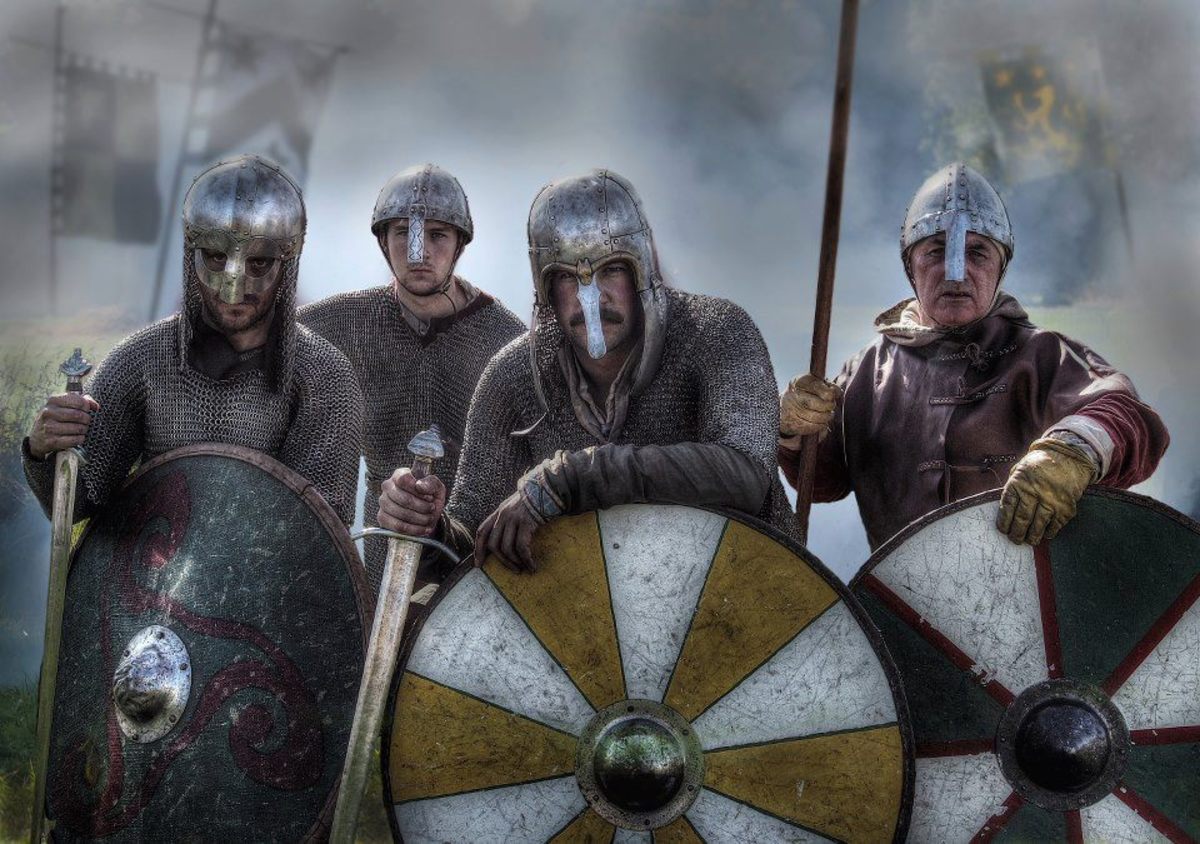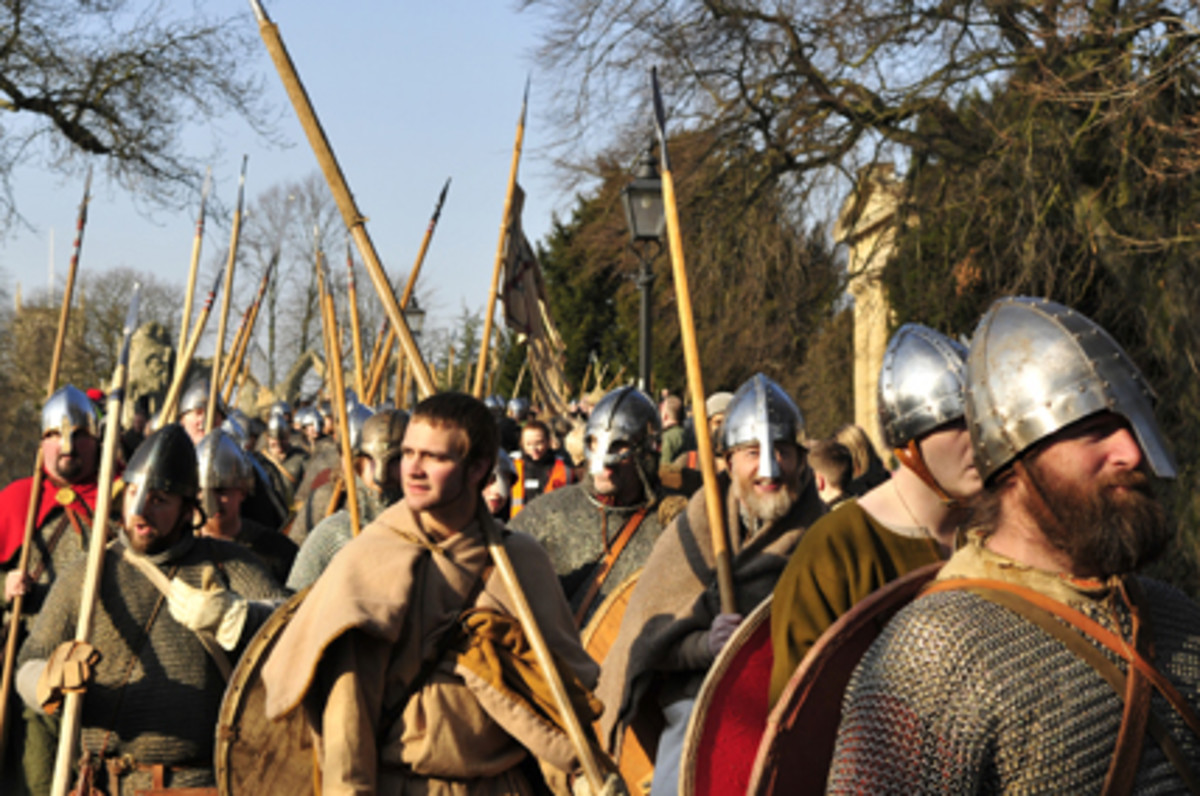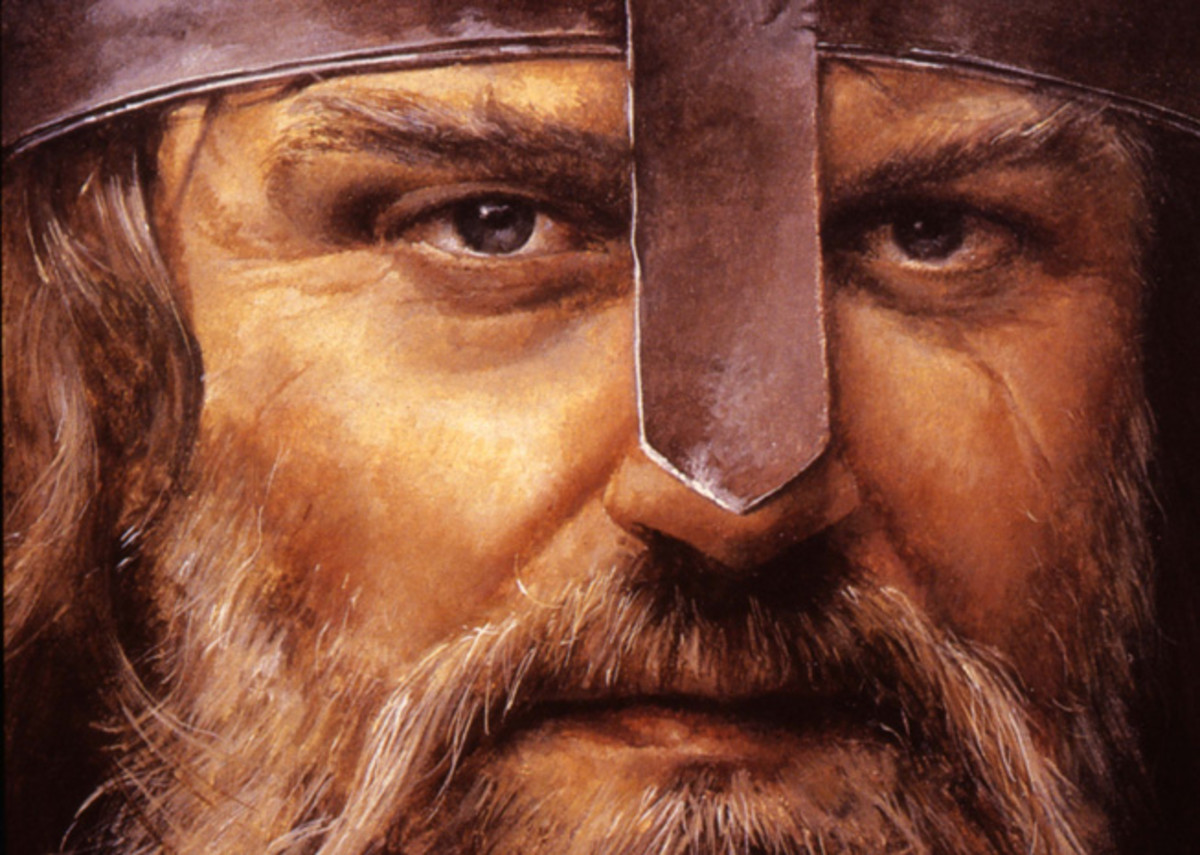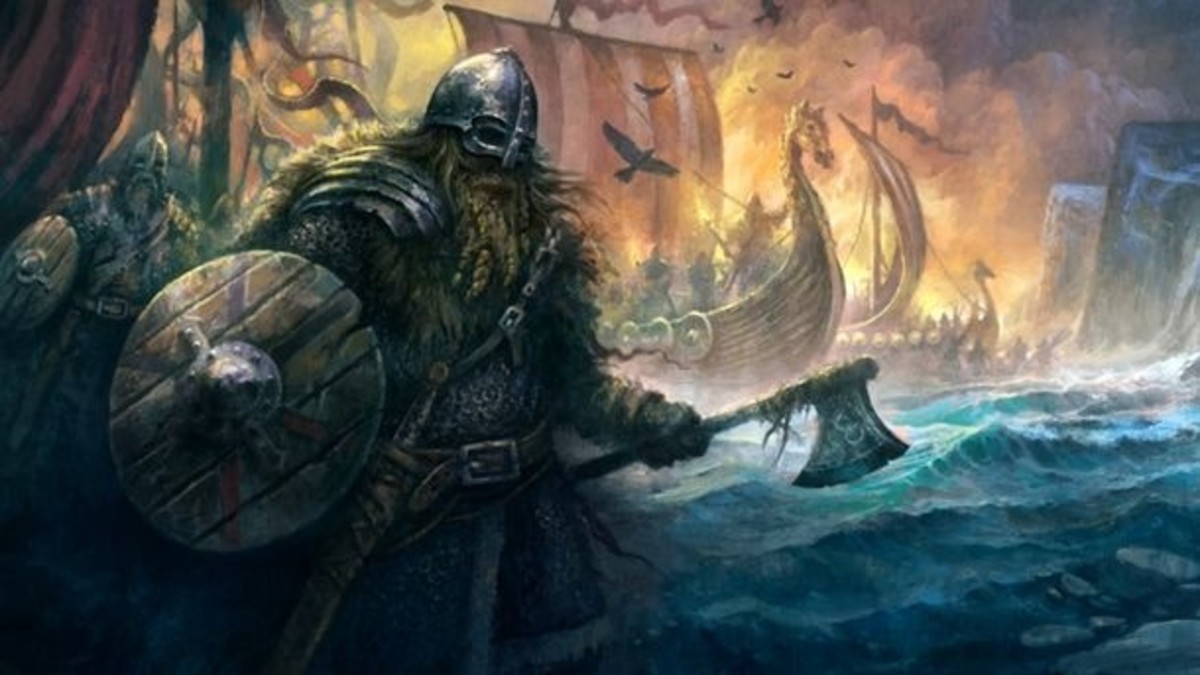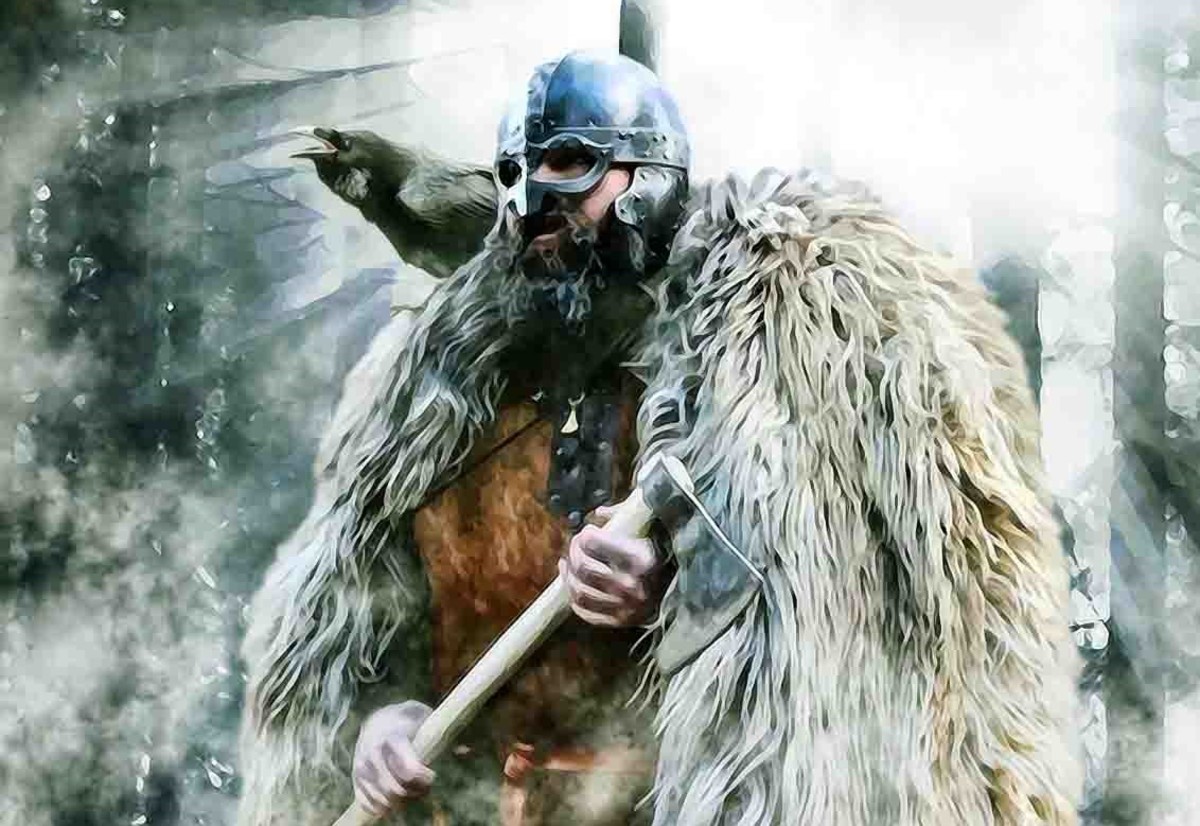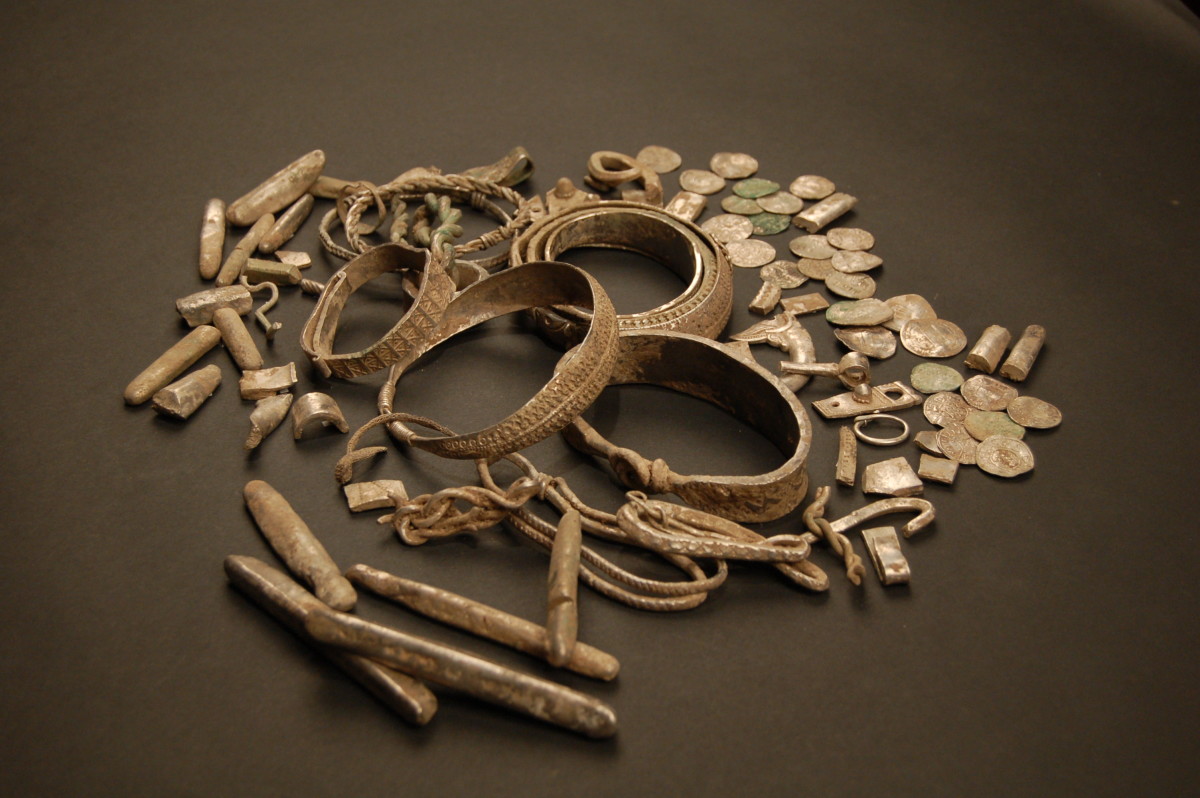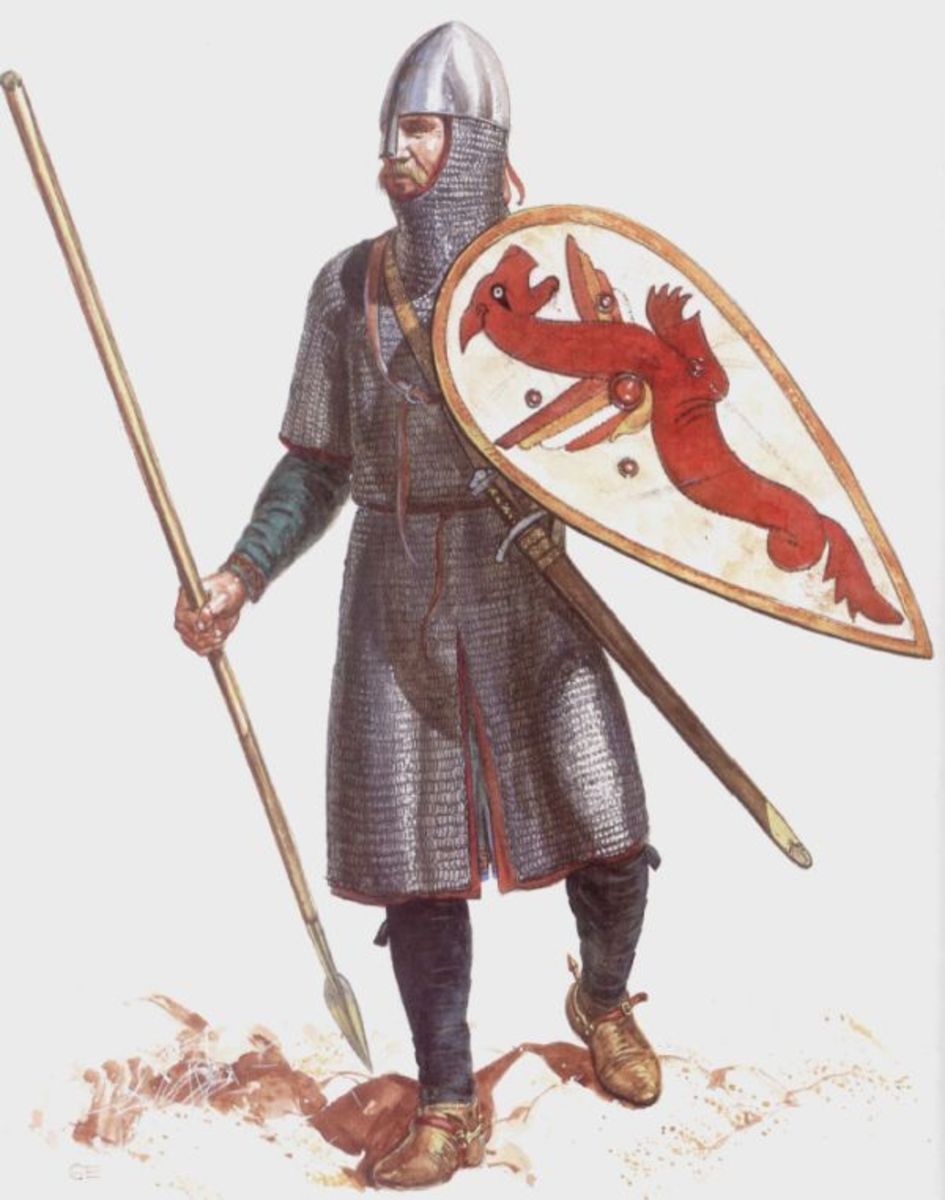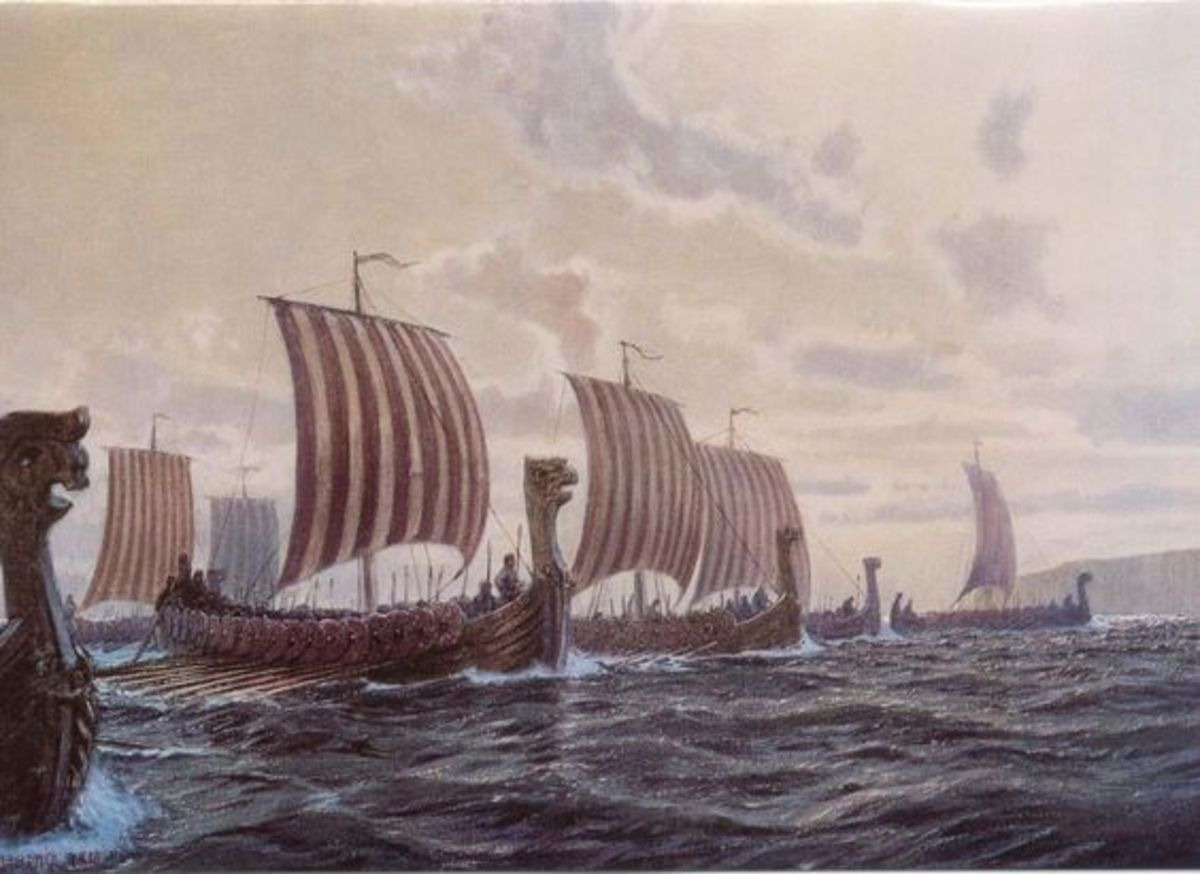- HubPages»
- Education and Science»
- History & Archaeology»
- History of Europe
Viking - 13: Strengthening Walls - Defences, Call to Arms, Motivation and Early Scandinavian Feudalism
"A lone pine tree on open, windswept land might wither away. A lone man loved by none, how long can he stand?"
Havamal
Begun by Harald 'Blue-tooth', strengthened by Svein 'Forkbeard', strongholds to ready the Danes fit to carry away Aethelred's Danegeld
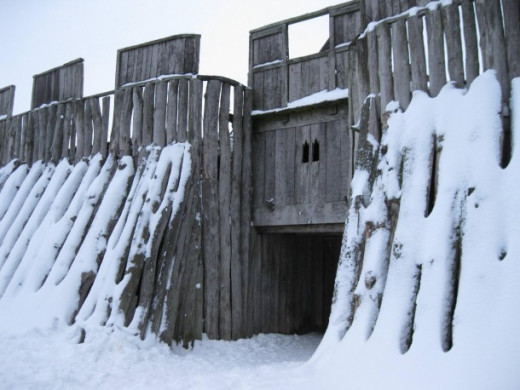
Strengthening the Walls
Central to the aims of the kings of Wessex was the creation of a single kingdom beyond their own bounds. It was Aelfred's dream. To achieve this goal road-building the fortification of the burhs, and strengthening of bridges was paramount. boundaries had been pushed eastward to Kent in the south and to the kingom of the East Saxons in the east. Mercia and East Anglia had obstinately kept Wessex at bay in their northward push. Then came the Danes. Wessex was almost over-run by the sons and followers of Ragnar Lothbrok until Aelfred could summon enough numbers for a stalemate and treaty with the war-band leader Guthrum at Wedmore in AD 878. It was his grandson Aethelstan who exerted the kind of power Aelfred could only dream of, being lauded as 'bretwalda' or high king over the other kings of Britain and Ireland.
In making it hard for Viking invaders from Scandinavia, the Northern Isles and from across the Irish Sea to over-run the disparate kingdoms the kings of Wessex pursued their ambitions single-mindedly. Markets, mints for the production of a single monetary value - does this remind you of a more recent phenomenon, from Brussels? - and refuges were only possible with stronger defences, where burhs offered safety for the economy to grow. At times existing foundations built by the Romans could be used in London, York, Chester and Lincoln.
In Scandinavia itself the most advanced, centralised state was Denmark, where a network of regional circular fortified camps was built. The earliest of these was at Fyrkat on the Jutland peninsula; others such as at Aggersborg, Jellinge and Trelleborg were built, serving chiefly as defences against the northward surge of the Frankish Empire. The camps were built on a grid within a circular ground plan for all-around visibility. There was nowhere an enemy could attack from without being seen well ahead of them gaining the outer ditch. The planning behind these circular defences would have been straightforward enough, using a central post, a length of rope and enough sharpened stakes to act as marker posts to set out the extent of the walls and ditches. The idea may have been borrowed from the Lower Rhine region, but they were likely to have been built as early as the reigns of Godred, Gorm 'the Old' through to the time of his great grandson Knut Sveinsson.
These Danish fortresses were the result of a strong monarchy, for the assembly and training of men initially to keep out the Franks, latterly for the invasions of the infant state of England in Svein Haraldsson's time, when Aethelred II 'Unraed' was on the throne of Wessex in the late 10th/early 11th Centuries.
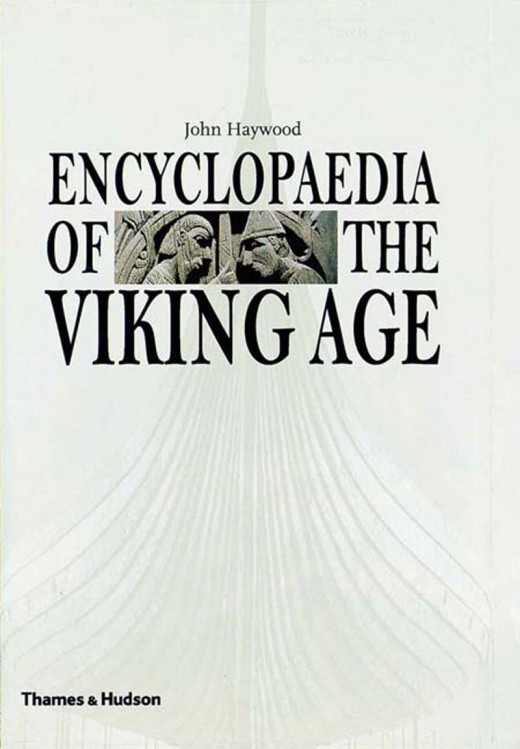
John Haywood gives an overview of the rise and achievements of Norse kings and centres of trade such as Birka, Dublin, Hedeby, Jorvik,.Kaupang, Miklagard and others, the war leaders, discoverers, storytellers and craftsmen that made up the rich tapestry of early Mediaeval life across Eastern, Northern and Western Europe. Builders of ships and strongholds, there were many who sought to enrich themselves by threatening the livelihoods of others. There were also those who sought to extend Norse influence to the Mediterranean Sea, with strongholds on Ibiza, raiding Ostia near Rome, recruiting into the Varangian Guard of the Byzantine emperors
Fortification and Training, the ring forts were central points for armament and training
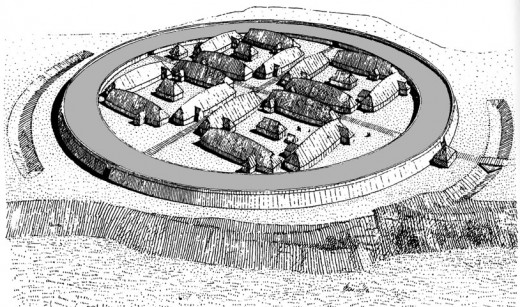
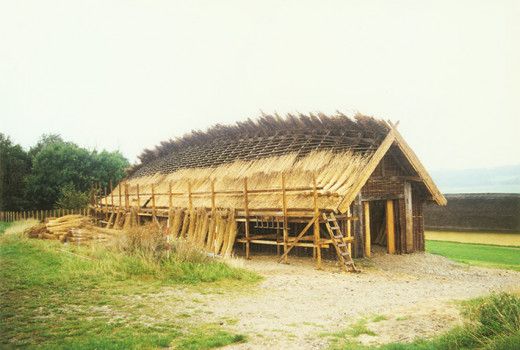
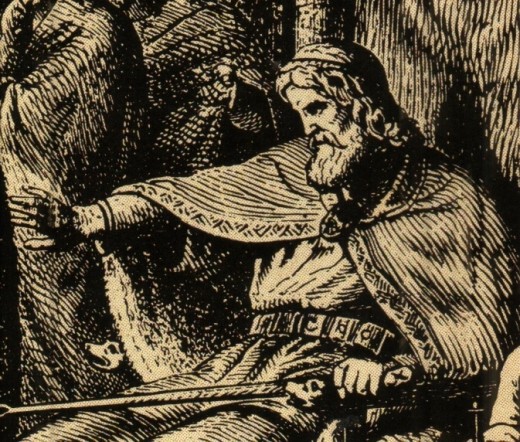
Drawing on Manpower
A change came over Scandinavia from the early days, with the local chieftain summoning his warriors and the king sending out riders to all corners of his realm with a stark warning to those who disobeyed his summons: "Come, or face the consequences".
Recruitment was latterly centralised, a single king or lord demanding his underlings show for a campaign or fight. These newly organised forces were recruited and armed by the king. Olaf Tryggvason in Norway, for instance, buying his retainers the swords they would fight with at the Battle of Svold. A show of good over-lordship at the time was the gift to his men of fine weapons, not only of swords but also axes, spears, chain mail and shields.
An alternative to the authority of the king and his largesse was the 'brotherhood of the oath', the Jomsvikings. they saw the continuing flow of silver as the cement between themselves and their paymaster. Thorkell 'Havi' ('the Tall') was not fussy who paid him, and so changed sides when he saw the colour of Aethelred's silver, and only reverted to serving Svein 'Tveskaeg' ('Forkbeard') when the Danish king threatened to over-run the Jomsvikings' fortress at Jumne (now Wolin in north-western Poland) and disband the brotherhood at the point of the sword.
The economics of supply were easily understood amongst the Vikings. When 'taking stock' between expeditions, living off plunder taken from subjugated lands supported their daily needs, and the rivers played their part in trade and the distribution of supplies once more.
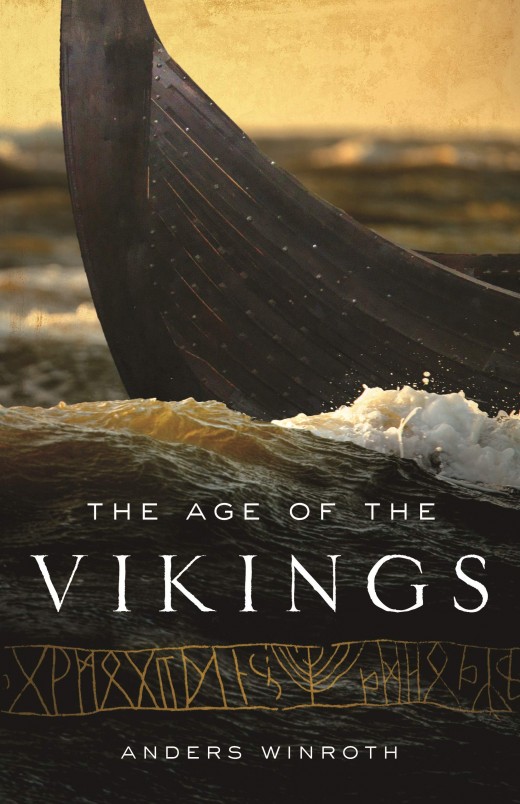
Look into changes within Scandinavia from the small early kingdoms and chiefdoms of Norway to the larger overall kingships, the Danes and Swedes with their already established kingships looked to expand east and westward. Raiding on the rivers and coasts of the Frankish empire and smaller kingdoms of the British isles began in the late 8th Century before colonisation. The earldom of Orkney and Shetland, kingdom of Man, Dublin and elsewhere in Ireland, the stand-off with Aelfred of Wessex and subsequent boundary changes - and let's not forget the exploration in the western and eastern seas and rivers beyond Europe..
Warfaring and power were central to prosperity in the northern kingdoms, with their restricted acreage for growing crops and building towns
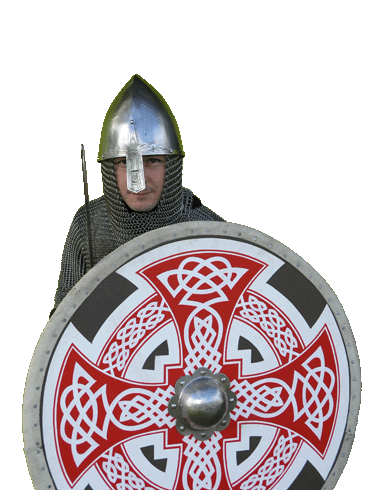
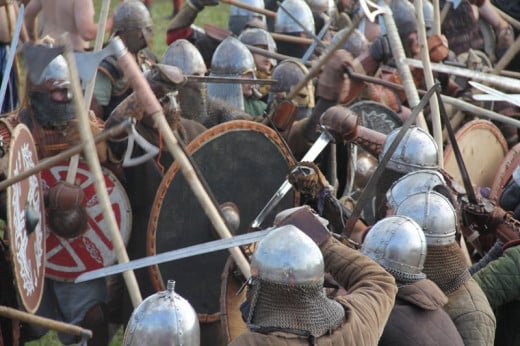
'Hope springs eternal...'
The motivation for any enterprise is profit. After deducting wages - and taxes - the chief instigator is left with something upon which he can base his power. So he hopes.
In a tight corner some will fight to save their kinsmen, friends, comrades and so on, but only as long as they can all enjoy the fruits of their enterprise.
To the warriors of yester-year there was another deduction to be made: sacrifice, not necessarily anything or anyone living, but an offering was made to the gods in thanks for victory. That the battlefield was the haven of strong war gods was a belief held onto long after the more southerly Germanic kingdoms converted to Christianity, t he Franks, the Angles and Saxons, Visigoths, Ostrogoths and Burgundians especially.
Tyr - or Tiw - was the god of war. Odin (Woden or Wotan to the Angles and Saxons respectively) was the god of the slain, the warriors who drank mead in Valhol by night and fought all day. Ragnarok would change that, the threat of the end of days, the long Fimbulvetr, Fimbul winter would kill the growth of crops in the earth, Jormungand, the 'world sepent' would curl himself around the earth to shut out the light and Fenrir the wolf would be free to savage mankind.
Besides being the god of the slaín, the kings, jarls and warriors, Odin was the Allfather, seeker of knowledge, maker of laws, father of Thor - the god of ordinary men who protected craftsmen, farmers and free men... but not thralls or slaves. (These tended to be Christian anyway and cowered in their corners at night, praying for deliverance to a god whose origins stemmed from the near east and whose son could only offer a life of suffering in this life)
The writer we owe much of our knowledge about the Norse gods was himself a Christian, an Icelandic scribe named Snorri Sturluson. His message to his readers was "look how chaotic the world of the heathen gods was, believe how lucky you are you only have one god to pray to!"
Whether many in Scandinavia saw their old gods in the light Snorri showed them in is to all intents and purposes guesswork. Certainly the warrior classes held onto a belief in the afterlife, carousing with the Valkyries, battling and spending their nights in Asgard, despite Olaf Tryggvason and Olaf Haraldsson trying to wrench them from the warmth of their beliefs to the cold reality of a life in purgatory. Nevertheless neither they nor ordinary folk 'worshipped' their gods in he manner understood by the Christians. They may have seen themselves just a little lower in standing than their gods, and that their world was merely a mirror image to that of the gods'. It helps to keep things simple, but tall tales were told by any and all. Thor's own drinking bouts, competing with 'Utgard Loki', the king of the Frost Giants only led to him drinking the sea dry. His battling with demons and 'outfoxing' the cunning dwarf Andvari was the stuff of fantasy - who doesn't dream up a world of his/her own? Our earhly existence needs some 'spicing up' from time to time. Daytime toil, working the land, tending the animals, baiting the lines for fish, these tasks all called for hard-thinking and equally hard graft with muscles aching by the end of the day. Mankind needed something to take away the drudgery. The time came then - especially on long winter's nights - for story-telling around the hearth after the evening meal. There would be a tale for each earthly task, bringing in everyone in the community into the warmth of fellowship. No-one was left out.
In Old-English the 'Hlaf-ord' or 'Loaf-giver' became the 'Lord'. This shows us how central to the community they were once, not remote in their 'house on the hill' as they later became. They were vital to the way of life. In a land-oriented society the man who organised the distribution of food was also the law-maker designate, the ruler on Midgard or earth. This concept led further to extended regional leadership and eventually a monarchy. As the concept of power developed, so the outlook of the warrior classes evolved with it.
Next - 14: Paring Njord's Salty Waters
The great Icelandic saga writer -
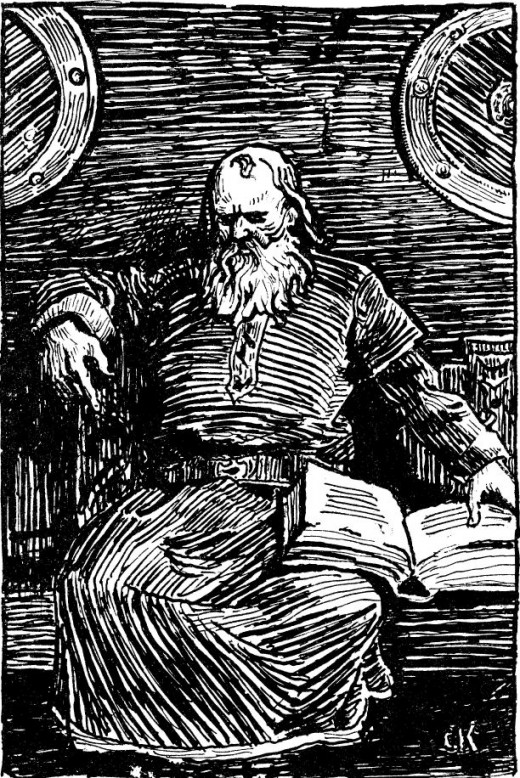
© 2012 Alan R Lancaster

